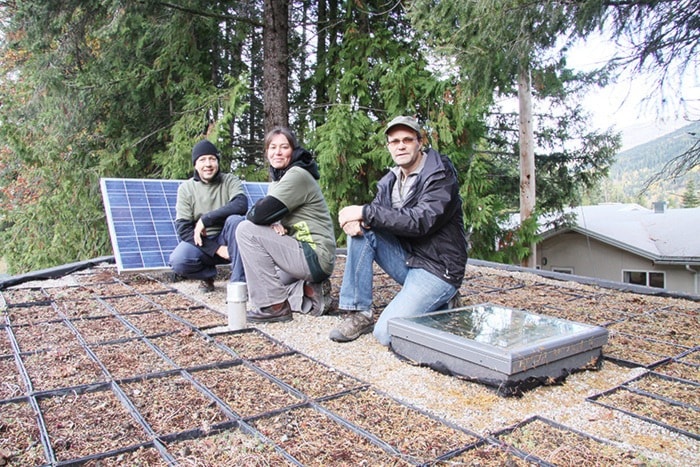The new eco-friendly public washroom is now open at Art Gibbon Memorial Park in Rosemont.
The structure is built entirely from natural, and mostly locally sourced, materials. The 12-inch thick walls are made from clay and wood chips, sealed with natural plaster, and covered by a timber frame shelter to protect it from the elements.
On the roof, amid trays of sedum plants, a solar panel collects energy to power interior lights and heat water for the sink in the single bathroom stall. If the panel collects more energy than it needs, the excess can be sold back to the grid. Alternately, power from the grid can be used when the panel can’t store enough sunlight.
“Ultimately the building net-zero in its energy consumption,” explained Don Willems, structural engineer for the project.
He and others who worked on the structure offered tours of the finished product earlier this month. The way all of them talk about the project, you can tell building it was a labour of love.
Throughout last summer, a number of workshops were held for people interested in helping construct the building and learning about the green building materials being utilized.
“Frankly, we needed a lot of volunteer labour to get the project done,” Willems said.
Parts of the building process were quite labour intensive. The clay and wood chip bricks that insulate the walls, for example, had to be formed by hand, using a method pioneered by Joern Wingander (who has since found a brick press to speed up the process).
The hand-made bricks were only used in half the building, while a loose mixture of clay and mulch fill the rest of the exterior wall. A “truth window” was built where the two insulation types intersect, offering a peek at how different they look.
“The loose material was faster to install, but the bricks offer more thermal mass,” Willems explained. “We used two different methods to see how each of the hold up over time.”
Willems said the cost of building the washroom with natural materials cost the City “a little bit more” than what it would have spent on a traditional brick-and-mortar structure, but over time he expects that investment will pay for itself.
“The lifetime cost of running the building will be less. You don’t have to pay anything to heat it and if something happens to the building, it’s easy to repair,” Willems said.
“There’s a lot of people in this area experimenting with green building methods in their homes, and I think now having a public space built from natural materials will help people realize this is a very adequate building system. It’s not just for hippies living in the bush.”
